The first player born and raised in North Dakota to play in the NHL, Cliff "Fido" Purpur, first turned professional in 1932-33 with the Minneapolis Millers of the Central Hockey League. In two seasons for the Millers, Purpur played in 81 games and scored 28 goals and 41 points, which caught the attention of the St. Louis Eagles of the NHL. The Eagles signed Purpur to play at the age of 20 for the 1934-35 season, the Eagles one and only in the league prior to folding.
After playing 25 games with St. Louis, including scoring his first NHL goal, Purpur rejoined the Millers for the remainder of the season.
It was in Minneapolis that he acquired his unusual nickname when a sportswriter wrote Purpur was "busier than a springer in a field of pheasants." leading to his unusual canine nickname.
It was back to St. Louis for the 1935-36 campaign, only this time with the St. Louis Flyers of the American Hockey Association in time for the Flyers to win the league championship. His first two seasons with the Flyers started out slowly, scoring 20 goals in 79 games, but he found his offensive game beginning in 1937-38 with 23 goals prior to setting career highs in goals (35), assists (43) and points (78) in 1938-39 to lead the club in scoring on their way to their second consecutive title. His speed and determined play, combined with his smaller size ( 5' 6" and 155 lbs.) and accessibility made him a fan favorite in St. Louis.
He would back up his 35 goals with another 32 in 1939-40 on his way to a 70 point season and conclude his run with the Flyers by helping them to their fourth championship in his six seasons with the club.
His successes in the minors earned him a second opportunity in the NHL, this time with the Chicago Black Hawks. His stay only lasted eight games, as he also developed a medical condition which gave him a persistent fever. The remainder of the 1941-42 season was spent on the other side of Missouri with the Kansas City Americans.
Purpur returned to the Black Hawks full time in 1942-43, setting a career NHL best in all offensive categories with 13 goals, 16 assists and 29 points and played on a line with brothers Max and Doug Bentley.
During the 1943-44 season, Purpur scored the only hat trick of his career on this date in 1943 when he had three goals and an assist in a Black Hawks 7-6 win over the New York Rangers. His hat trick accounted for a third of his 9 total goals for the entire season.
He split time in 1944-45 between the Black Hawks (21 games) and the Indianapolis Capitols (26 games). He then played briefly with the Detroit Red Wings for seven games of that season's playoffs.
It was back to St. Louis for 1945-46 to rejoin the Flyers, where he had his highest scoring season in four years with 18 goals.
His final season of 1946-47 was spent back in the Twin Cities of Minnesota, only this time across the river in St. Paul with the Saints of the United States Hockey League where he scored the final 15 goals of his career.
Purpur's final NHL totals stand at 144 games played with 25 goals and 35 assists for 60 points.
Following his playing days, Purpur played senior hockey in Grand Forks with his brothers Ray and Ken, coached at both the high school level in Grand Forks and the University of North Dakota from 1949 to 1956.
Ray, Ken and Fido Purpur while with the Grand Forks Amerks
He was inducted into the United States Hockey Hall of Fame in 1974 and was given the highest citizen honor of North Dakota, the Theodore Roosevelt Rough Rider Award in 1981.
Today's featured jersey is a 1942-43 Chicago Black Hawks jersey from Purpur's finest NHL season when he set career highs in all offensive categories.
The Black Hawks barbepole style was originally adopted in 1937 and went through a few minor revisions in striping and logo before arriving at this design in 1941 which remained unchanged until 1947 before there were some additional tweaks to the logo. The Black Hawks would continue to wear this basic barberpole style jersey until 1955 before changing to the original version of their jerseys which remain in use today.
This jersey was revived as the Blackhawks Turn Back the Clock jersey for the NHL's 75th Anniversary season when the Original 6 teams all wore throwback jerseys from their past at times during the 1991-92 season.

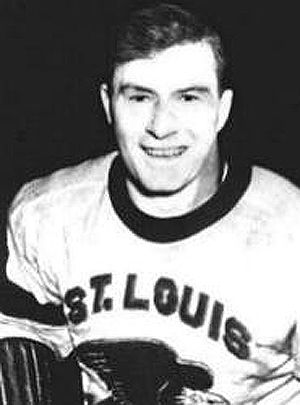
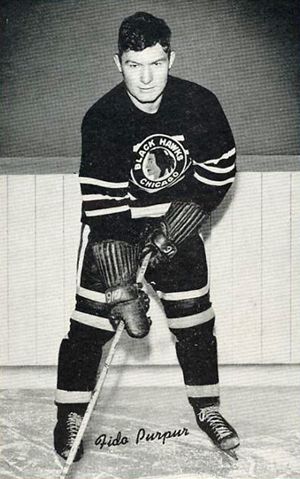
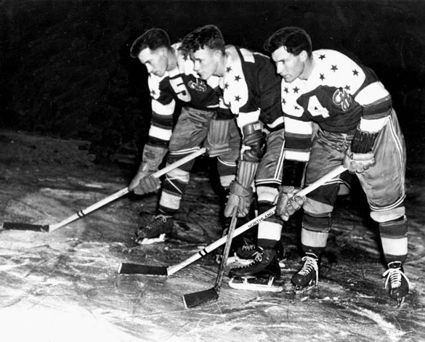
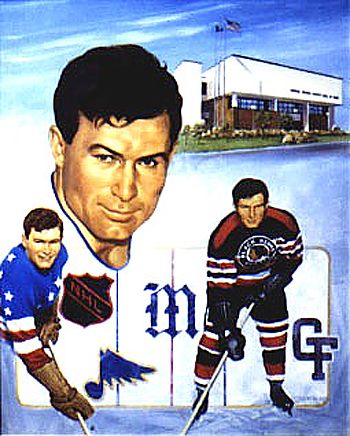
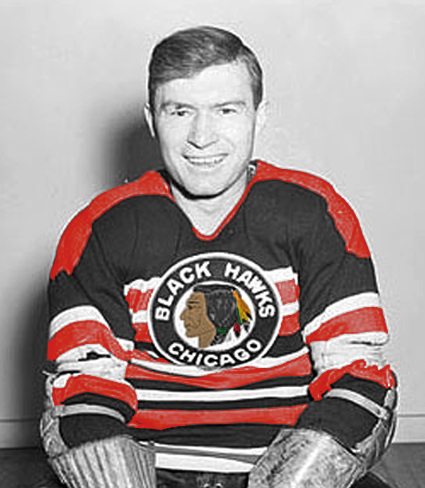










No comments:
Post a Comment
We welcome and encourage genuine comments and corrections from our readers. Please no spam. It will not be approved and never seen.